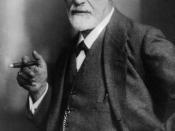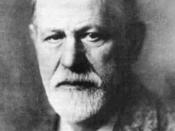We've all heard the expression, "we need to get to the root of the problem", that's what psychodynamic therapy attempts to do. This type of therapy focuses on unconscious processes and how they manifest themselves in the individuals current behavior. Psychodynamic Therapy was first introduced by Sigmund Freud, a Viennese neurologist . Freud developed psychoanalysis which is the study of the unconscious. His ideas were introduced in 1909 during a series of lectures at Clark University. Freud believed that much of what went on in an individual's psyche was on the unconscious level. He believed that when something unpleasant or traumatic occurred in a person's life, or the person's needs or wishes were unacceptable in some way, these things were pushed back to the unconscious level (repressed) to protect the conscious mind (Nolen-Hoeksema, 2004). Others coming after Freud have rejected parts of his psychodynamic theory, while building on other portions to develop new theories such as the object relations theory.
Followers of this school of thought believed that our early relationships in infancy and childhood have a lasting affect on all future relationships (Nolen-Hoeksema, 2004)Now that we reviewed the beginnings of psychodynamic therapy, we need to look at it's effectiveness. In a meta-analysis study Falk Leichsenring and Eric Leibing (2003) looked at the effectiveness of psychodynamic and cognitive behavior therapy in treating personality disorders. They examined studies that were published between 1974 and 2001. They only used studies that 1) used standardized methods to diagnose personality disorders, 2) applied reliable and valid instrument for the assessment of outcome, and 3) reported data that allowed calculation of with-in group effect sizes or assessment of personality disorder recovery rates. They included 14 different psychodynamic studies in their analysis. They also selected those studies with the longest post treatment follow-up. What they...



Comments
Basis writing skills need to be addressed, paragraphing sentence structure etc. Content good but an introduction is necessary to outline objectives. Remain impersonnel though never write us We or I.
1 out of 1 people found this comment useful.